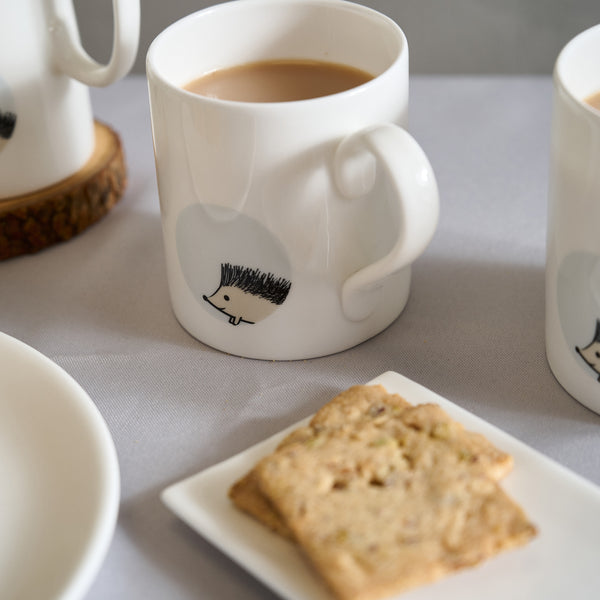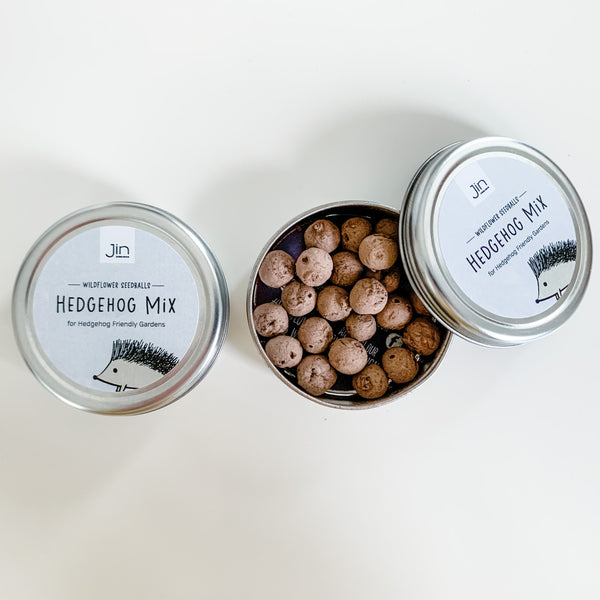Why Do We Love Hedgehogs? The History, Symbolism and Folklore of Britain's Best Loved Creatures
What is it about Britain's favourite wild creature that makes it so popular?
The humble hedgehog is consistently voted Britain’s favourite wild animal. These small prickly creatures are one of the oldest mammals on earth. You will find them mentioned in folklore and literature and they are often associated with good luck, wisdom and even magic. You can find them decorated on mugs, gifts and homeware and even here at Jin Designs, they regularly feature in the bestselling items. As their numbers are in decline, more and more people want to find out about hedgehogs. So here are our five fascinating facts about these charming creatures.
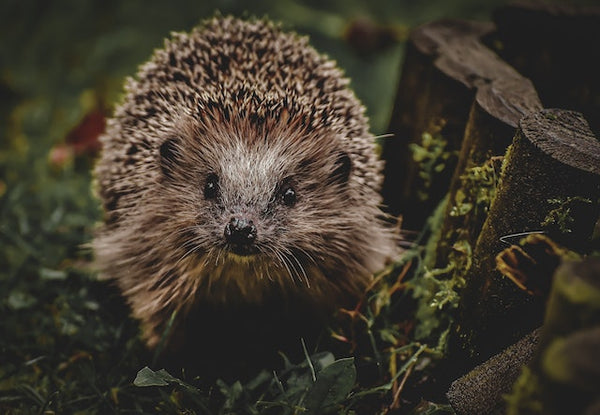
1. Hedgehog History
Hedgehogs are believed to have evolved from a group of mammals from the Eocene period. That’s between 56 and 33 million years ago! They are native to Europe, Africa, and Asia.
In Europe they can be found in forests, grasslands, and urban areas. There are at least 17 different species of hedgehog which includes the European hedgehog. There are fewer than a million believed to be living in the British Isles.
You can find hedgehogs at night foraging in your garden. They feed on slugs, snails, beetles, and worms. It’s small wonder that the hedgehog is known as a gardener’s best friend!
Their life span can be between 2 to 7 years, but 2 to 3 years is more likely due to changes in climate, habitat loss and road casualties.
Hedgehogs reach sexual maturity in their second year. The mating season is in May and their pregnancy lasts for 35 days. They usually only have one litter per year of about 5 babies. Hoglets leave the nest when they are 8 weeks old to fend for themselves.
Fun Fact: According to the Woodland Trust, there was no official name for baby hedgehogs until the 1990s. Since then, Hoglet and Hedgehoglet have become popular nouns and are used regularly now.
2. Hedgehog Characteristics
The name hedgehog came about in 1450 from Middle English. It refers to their habitat (hedges) and their long snout and the hog-like sounds they make.
Hedgehogs are between 20-25 centimetres long and are covered in about 5000 to 7000 spines. These spines are hollow and made stiff with keratin. When threatened hedgehogs roll into a tight ball. They do not have spines on their face, limbs, or underbelly.
The European hedgehog has five toes which are clawed so they can dig and climb. They have very poor eyesight but a strong sense of smell and sound. They are solitary, nocturnal creatures, preferring not to have the company of other hedgehogs. Like humans they have their own characteristics, some are shy whereas others are more curious and outgoing.
Fun Fact: Hedgehog’s legs are a surprising 10 cms long!
3. Hedgehog Symbolism and Folklore
The hedgehog is regarded as a magical creature in African folklore. It gives guidance and advice and even grants magical wishes. In Latvian folklore there is a tale about how the hedgehog helped God by suggesting that he changed the size of Earth so that it could fit into Heaven. God was touched by the hedgehog’s wisdom and rewarded it with a fine suite of needles.
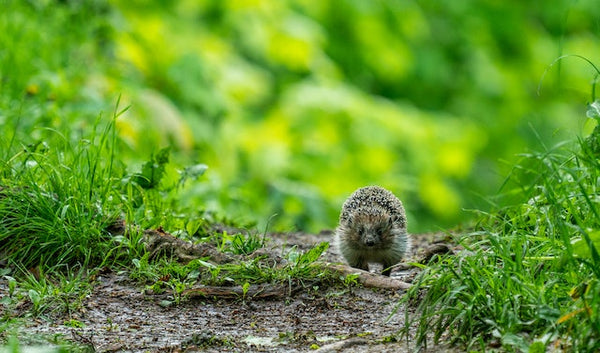
British Medieval folklore accused the poor creatures of stealing milk from cows’ udders and were even thought to be witches in disguise.
In complete contrast, ancient Egyptians wore amulets of the hedgehog and regarded it as a good creature. There are images of hedgehogs in the art of some Old Kingdom tombs, and it is believed the creature was regarded as a symbol of rebirth due to its awakening from hibernation.
Fun Fact: The Chinese call hedgehogs ‘Happy Animals’ because if you feed them, they will bring good luck and prosperity to your home. They are considered protectors of the family.
4. Hedgehogs in Literature
Hedgehogs can be found in a wide variety of literature. They are mentioned in a few Shakespearean plays, a tale by the Brothers Grimm, Hans my Hedgehog, which is like the Hare and the Tortoise. Rudyard Kiplin has a hedgehog called Stickly Prickly in his, Just So Stories and the Queen in Alice’s Adventures in Wonderland uses a rolled-up hedgehog as her croquet ball.
Other children’s books such as, Wind in the Willows and the Animals of Farthing Wood also have hedgehog characters. It was Beatrix Potter, however, who introduced us to, arguably the most famous hedgehog in literature, Mrs. Tiggy-Winkle.
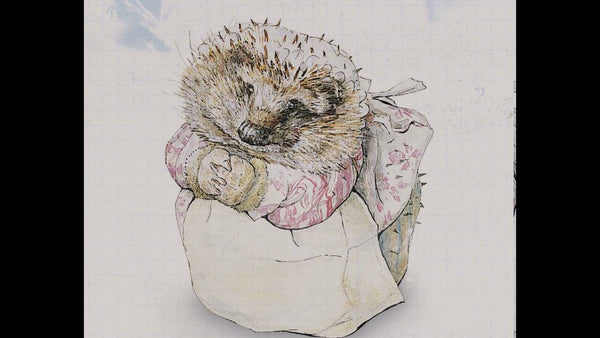
The bedtime story, Tale of Mrs.Tiggy-Winkle, was first published in 1905 and has since been translated into over 30 different languages bringing the enchanting hedgehog to the attention of children everywhere.
If you have not had the pleasure of reading it yet perhaps it’s time to get yourself a copy and relax with a nice hot drink from Jin Designs very own Hedgehog Mug from our Woodland Collection.
Fun Fact: Beatrix Potter was not only an author, but she was also a scientist and conservationist. Her home was a menagerie. She kept hedgehogs, mice, rabbits and even frogs.
5. How to Help Hedgehogs

In Britain, hedgehogs begin to hibernate usually in November, but it can be in December or January depending on the weather. Hedgehogs feed on a variety of insects, snails, and other small animals, helping to control pest populations and maintain balance in their habitats. Once temperatures become cold their food source will become scarce.
As hedgehogs need to fatten up ready for hibernation you can help them by providing supplementary food. They will appreciate a bowl of cat or dog food, either wet or dry, and a bowl of fresh water. Never give bread or cow’s milk as this can be fatal. Hedgehogs are lactose intolerant despite old folklore accusing them of stealing cows’ milk!
You can also make your garden safer by securing ponds and checking your dry leaf and branches pile before setting fire to it. They love to nest under things and need plenty of dry leaves to build their nest.
Find out more in our blog post How to encourage hedgehogs into your garden
Fun Fact: You can encourage hedgehogs into your garden with the help of Jin Designs Hedgehog Mix Wildflower Seedballs. You can plant them in Spring or Autumn to grow the wildflowers which attract the insects that hedgehogs love and they also provide shelter during their night visits to your garden.
These five fascinating facts show how special hedgehogs are and why they continue to deserve to be Britain's number one favourite wild creature.
And don't forget, you can bring the magic of hedgehogs into your home with the wonderful Jin Designs Hedgehog Collection. Or shop for a unique and special range of Gifts for Hedgehog Lovers.


